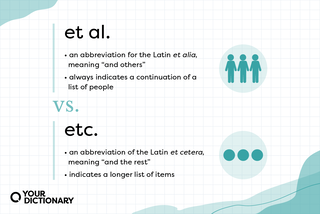
After you’ve written a letter or email, you’ve got one more thing to add — but who’s got the time to go back and add it into your message? And what if your extra note isn’t related to your message at all? That’s when you can use a handy P.S., a wordy writer’s best friend.
What Does “P.S.” Stand For?
The abbreviation P.S. is short for postscript, which comes from the Latin postscriptum, meaning “written after.” It comes before an added sentence or paragraph to the end of a written message.
Think of P.S. as the “one more thing” you include in your communication, either to add more information or one last friendly note.

I.e. vs. E.g: Difference and Use (With Examples in Sentences)
Where to Place P.S. In Your Message
The postscript should always follow the signature at the end of a letter. In the example below, the postscript emphasizes when the forms are due and the urgency of the task.
Jane,
I hope this email finds you well. Please see the forms attached below.
Sincerely,
John Smith
P.S. Don’t forget to send me the completed forms by the end of the day.
Fast Fact
The term postscript first entered the English lexicon in the early 1500s to indicate that a note was added to a piece of correspondence.
Since 16th-century letters were primarily handwritten, inserting a sentence or two meant starting the whole thing over again. Adding a postscript (shortened to P.S. in the 17th century) was an easy way to add to your letter without ruining how it looked.
Is It “P.S.” or “PS”?
You typically write P.S. with both the “P” and “S” capitalized.
The standard form in American English is P.S. with periods after each letter, while British English (and the Chicago Manual of Style) favors PS without periods.
How to Punctuate P.S.
The rules vary when other punctuation follows P.S.
In the cases without periods, many writers may use a colon (:) or a dash (—) to separate PS from the rest of the message. For the most part, you can punctuate your P.S. (or PS) the way you want.
Examples of P.S. in the 21st Century
Today, we can easily put our computer cursor (or on touchscreens, our finger) into the correct place in our text to add a note. So why do we still use P.S.?
There are a few stylistic reasons why P.S. still appears in our letters — and emails, and sometimes even texts — in the 21st century, including:
- adding information that’s irrelevant to the rest of the letter
(P.S. Your missing sock is behind the dryer.) - asking an unrelated question for the reader to answer
(P.S. Did you save that report under a different name? I can’t find it anywhere.) - setting a friendlier or funnier closing tone than the closing of your letter
(Sincerely, Julia. P.S. I’m still smarter than you!!) - expressing your feelings to your reader
(Love, Adrian. P.S. I love you more.) - highlighting a call to action email marketing campaign
(P.S. Click here if you’d like to donate to our cause today!)

What's the Difference Between "Etc." and "Et Al."?
What Does P.P.S. Stand For?
If you want to add even more information at the end of a message, you can use P.P.S., which stands for post-post-scriptum.
This allows you to highlight any other afterthoughts you may have and separate them from the first P.S. A P.P.S. section should come after the initial P.S., and both must appear after the signature.
- P.S. Can you bring my football stuff with you tonight?
P.P.S. I also need my baseball stuff for tomorrow.
- P.S. We need your analysis by 5 pm.
P.P.S. Please have enough copies for everyone on the team.
P.S. vs. N.B.
P.S. (and P.P.S.) isn’t the only way to add information to a letter.
N.B. stands for nota bene, which means “note well” in Latin. It often appears in academic writing, particularly in endnotes or footnotes, to call the reader’s attention to an important detail.
Even though P.S. and N.B. both accompany short passages that aren’t included in the main body of writing, the terms are not interchangeable. P.S. only appears in correspondence (letters, emails, texts, etc.), while N.B. appears in professional or academic writing. P.S. is an afterthought; N.B. draws your attention to a key detail.
- P.S. Do you want to come over later?
- N.B. Take care in handling the chemical mixture, as exposure to skin could be very dangerous.

How to Write a Letter in Hassle-Free Steps (With Sample)